This article was medically reviewed by Luba Lee, FNP-BC, MS. Luba Lee, FNP-BC is a Board-Certified Family Nurse Practitioner (FNP) and educator in Tennessee with over a decade of clinical experience. Luba has certifications in Pediatric Advanced Life Support (PALS), Emergency Medicine, Advanced Cardiac Life Support (ACLS), Team Building, and Critical Care Nursing. She received her Master of Science in Nursing (MSN) from the University of Tennessee in 2006.
There are 8 references cited in this article, which can be found at the bottom of the page.
This article has been viewed 93,068 times.
Ketosis strips are small slips of paper which measure the amount of ketone in your urine. Ketosis urine strips use a color coding system to indicate the level of ketones in your urine. High levels of ketones in urine indicate high amounts of fats in the urine, which indicates that the keto diet is having its desired effect. On the other hand, for diabetics, high amounts of ketones in the urine can indicate a dangerously high level of blood sugar.
Steps
Urinating on a Ketone Strip
-
1Purchase ketone strips at a local drugstore. Ketones are measured primarily by people on a ketogenic (keto) diet. They can also be used by diabetic individuals. Ketone strips are readily available at drugstores and large pharmacies. Look in the dietary supply section, or in a section dedicated to diabetic medical equipment. The strips will come in a plastic container or a cardboard box, and should have “Ketone” printed on the side.[1]
- Ketone strips will also be available in the pharmacy section of most large grocery stores. The strips are also available through major online retailers.
-
2Dip the ketone strip into a urine sample. Urinate into a disposable plastic cup to collect the urine sample. Then, dip about 1⁄4 inch (0.64 cm) of the ketone strip into the urine. Be sure to dip in the tip that contains the ketone-sensing chemicals. This end will be slightly thicker than the other.[2]
- You can purchase disposable plastic cups at any grocery store. Check the dental section or the section containing plastic plates and plastic ware.
Advertisement -
3Urinate on the ketone strip if you prefer not to collect a sample. For most individuals, it's easiest simply to urinate directly onto the strip. Do this over a toilet. After you're finished urinating, hold the ketone strip over the toilet bowl so that the urine doesn't drip on the floor.[3]
- If you're urinating while seated, try not to dip the ketone strip into the toilet water. This will dilute the urine and ruin the sample.
Measuring Your Ketone Level
-
1Wait for the ketone strip to change its color. As your urine reacts with the chemicals on the urine strip, the strip will turn a yellow, maroon, or purple color. Follow the directions printed on the side of the packaging, which will tell you how long you should wait. Most ketone strips ask you to wait 40 seconds for best results.[4]
- Waiting too long to read the results—or not waiting long enough—can result in a misleading reading.
-
2Match the ketone strip with the color indicators on the packaging. If you look at the ketone-strip container, it will have a series of colored squares on one side. Hold your colored ketone strip up to the side of the container, and find the color square that best matches your urine strip.[5]
- It may be the case that the color of your urine strips fits in between 2 of the color squares on the packaging. In this case, assume that the higher reading is a more accurate result.
-
3Read the numerical value beneath the matching color square. Once you've matched your urine-strip color with a color square, look closely to find the number and description that correlate with the color. The standard ketone-level descriptors include: “Trace,” “Small,” “Moderate,” and “Large.”
- The colors will also correspond to numerical values: 0.5, 1.5, 4.0, etc. These measure the amount of ketone in your urine in units of milligrams per deciliter, or units of millimoles per liter.
- Healthy people not on a keto diet will have extremely low levels of ketone in their urine.
Interpreting the Ketone Strip Results
-
1Increase protein and reduce carb consumption if you have a low result. If you've recently started a keto diet, your body will be eliminating large amounts of ketones through the urine. This will result in a deep, maroon-colored urine strip, which correlates to a “Large” amount of ketones in your urine. If you're on a keto diet and the urine strip reads “Trace” or “Small,” increase the rigor of your diet.[6]
- This can include cutting out more carbs, or consuming more protein.
-
2Expect the ketone-strip color to lighten as your keto diet progresses. When you begin a ketone diet, your ketone strip will turn a dark maroon or purple. By the time you're a few months in to the diet, though, your urine-strip results will lighten, and may only indicate a “Moderate” amount of ketone in your urine. This is normal, and not a sign that your diet is failing.
- Once your body has become used to burning stored fat for energy, it will have less ketone to eliminate via urine.
-
3Contact your doctor if you experience high ketone levels with type-1 diabetes. For type-1 diabetics, high levels of ketones in your blood can indicate dangerously high blood-sugar levels. Test for ketones if you are worried your blood sugar may be dangerously high. If your test reveals a high amount of ketones in your urine, visit your doctor immediately.[7]
- Other signs of high blood sugar include: weakness, nausea or vomiting, extreme thirst, and difficulty breathing.
Warnings
- Individuals with type-1 diabetes also need to track the levels of ketone in their blood, for medical purposes. It's recommended that diabetics do not use urine strips for this purpose, though. Medical blood tests can pick up many more types of ketone than ketone strips can, and are less likely to give false results.⧼thumbs_response⧽
- If you have diabetes, you can develop diabetic ketoacidosis (DKA), which can be life-threatening. This is more common with Type 1 diabetes but can occur with Type 2 diabetes, as well. Symptoms include high ketones in urine, increased thirst, increased urination, high blood sugar, nausea, fruity breath, difficulty concentration, and tiredness. If you experience symptoms of DKA, seek emergency medical care.[10]⧼thumbs_response⧽
- For individuals with diabetes, ketones in the urine or blood are a bad thing. They can indicate a lack of insulin and high levels of acid in the blood.⧼thumbs_response⧽
References
- ↑ https://www.abc.net.au/news/2018-07-02/ketogenic-dieters-robbing-diabetics-of-life-saving-tests/9927608
- ↑ https://uihc.org/health-topics/urine-ketone-testing/
- ↑ https://www.diabetes.org.uk/guide-to-diabetes/managing-your-diabetes/ketones-and-diabetes
- ↑ https://uihc.org/health-topics/urine-ketone-testing
- ↑ https://uihc.org/health-topics/urine-ketone-testing
- ↑ https://www.uchicagomedicine.org/forefront/health-and-wellness-articles/ketogenic-diet-what-are-the-risks
- ↑ https://www.ncbi.nlm.nih.gov/pmc/articles/PMC5734222/
- ↑ https://patient.info/diabetes/urine-ketones
- ↑ https://patient.info/diabetes/urine-ketones
About This Article
To read ketosis strips, start by urinating directly onto the strip. Next, hold the strip over the toilet bowl so urine won't drip on the floor and wait about 40 seconds for the strip to change color. Then, hold the strip next to the color indicators on the packaging and find the color square that best matches your strip. Finally, find the number and description that correlate with the color to get your results. For tips on what to do if your levels are high, read on!

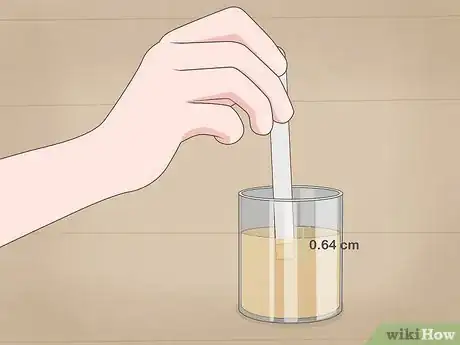


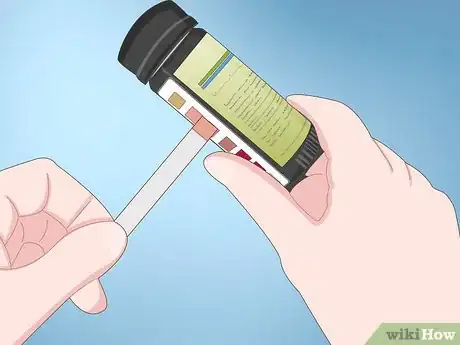

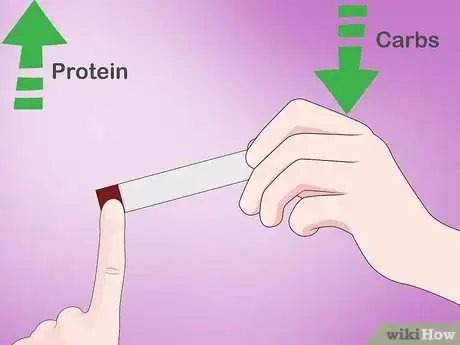







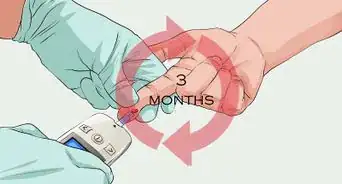


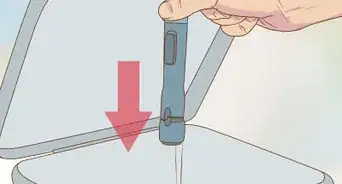



















































Medical Disclaimer
The content of this article is not intended to be a substitute for professional medical advice, examination, diagnosis, or treatment. You should always contact your doctor or other qualified healthcare professional before starting, changing, or stopping any kind of health treatment.
Read More...